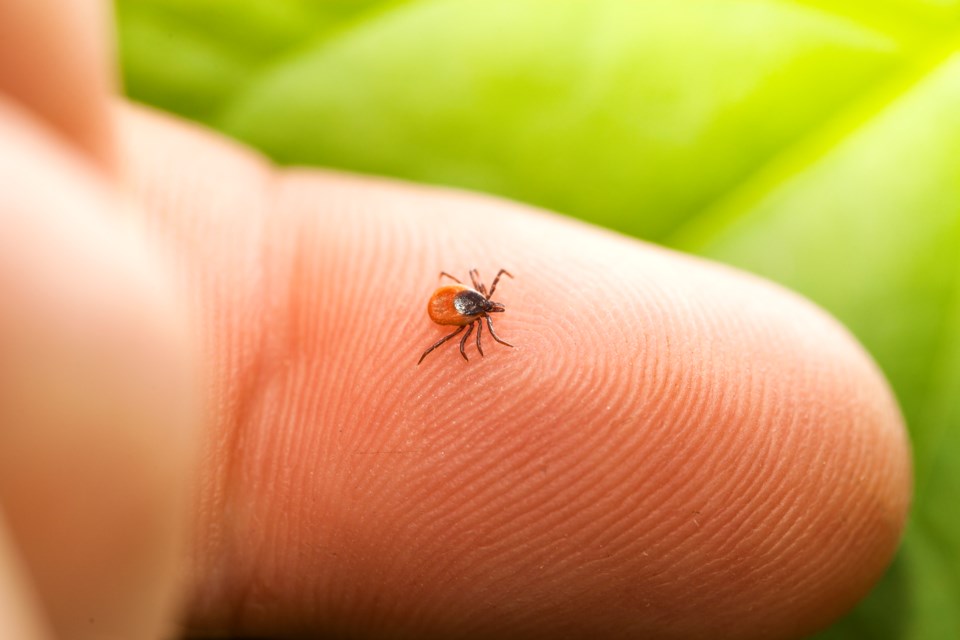May is Lyme Disease Awareness Month in Canada as well as the beginning of the tick season in Saskatchewan, making it the perfect time for the Canadian Lyme Disease Foundation to highlight a new tick mapping project from Ontario researchers.
Geneticks, a private research lab in Ontario, has created a new interactive map that outlines important data on Lyme disease in ticks such as infection prevalence, seasonal tick activity, and regional species composition.
The map is a public resource that provides data on ticks for the entirety of Canada, so users can see where people are encountering ticks that may be infected with the bacteria that causes Lyme disease.
Spring is typically when people and pets begin encountering ticks, especially when they spend time in tall grass, brush or wooded areas where ticks are most prevalent.
The CLDF and the Saskatchewan Ministry of Health are urging people to take precautions against tick bites, as the small pests are the prime transmitters of Lyme disease.
Studies by the U.S. Centers for Disease Control and Prevention estimate that Lyme disease infection has increased to 476,000 people per year, making it the most prevalent vector-borne disease in North America.
Although Lyme disease is still relatively rare in Saskatchewan, infected tick species are present in the province. Lyme disease is transmitted primarily by the black-legged tick, which is the least common species of tick reported each year in the province.
American dog ticks make up the majority of specimens reported by residents, at 96 per cent, and are active from mid-April to the end of July. Rocky Mountain wood ticks and winter ticks, also known as moose ticks, are also found here in small concentrations.
Blacklegged ticks, which do carry Lyme disease, are typically introduced to the local ecosystem by migratory birds in the spring and remain active throughout the spring, summer and fall.
The Ministry of Health launched a tick tracking app last year called eTick, where residents can report any tick they find for quick identification by experts and to contribute to the provincial map of tick prevalence.
Last year, a total of 2,678 ticks were identified in Saskatchewan and only 12 were blacklegged ticks. Of those specimens, seven ticks were tested and three returned positive for the bacteria that causes Lyme disease.
Prevention of Lyme disease relies on avoiding tick bites, removing attached ticks quickly, and seeking the right treatment, said the CLDF. An early diagnosis and treatment plan is crucial to prevent serious complications from the disease.
The best advice to avoid picking up ticks while outdoors this spring is to stay away from tall grass, or to wear long sleeves, closed shoes and socks over the ends of your pant legs to stop ticks from crawling up your legs.
Insect repellants that contain DEET or icaridin can also deter ticks, and wearing light-coloured clothing can make them easier to spot when crawling on you.
Do a full-body tick check on both people and pets after being outside, and consider showering or bathing as soon as possible after being outdoors to wash off loose ticks that are not yet attached.
If you find a tick attached to yourself or a pet, experts advise removing it carefully with tweezers, avoiding squeezing or crushing the body after removal in case it contains infectious fluids. Applying substances like vaseline to an attached tick is not recommended.
Both the CLDF and the Ministry of Health hope that tracking data on tick populations will help people avoid encountering ticks in the future, and ultimately prevent further transmission of Lyme disease.
For more information about how to identify ticks, recognize symptoms of Lyme disease or submit to the eTick app, visit saskatchewan.ca/lyme.




